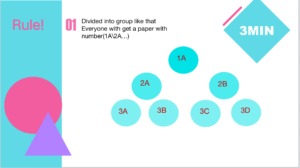Problem Scenario
I have created and licenced an Open Toolkit for Artistic Learning. I’d like to organise a public event within which to present and run this Open Toolkit that will attract like-minded peers. I’ve heard that “unconferences” are ways of organising such participatory events, but I’m not sure what unconferences are, or how to find out about them. It all seems so daunting. Where should I start?
Find out what a BarCamp is. How are they organized? What are the ‘rules’ of a BarCamp?What other sort of Unconference formats are there and how do they work?
The BarCamp is a kind of system aimed at Free knowledge exchange, which puts the audience in the focus, keeps staying up to date, and encourages Co-Create. (Kirstin Duffin, 2012). As each one gets a chapter and my part is “Unconferences.” in Hacking the Academy: New Approaches to Scholarship and Teaching from Digital Humanities. I get a deeper understanding of the background of unconferences: Barcamps, Unconferences, and various other open session formats that center upon user-generated topics and discussion. As Kirstin (2012) lists, there are some important features that consist of Barcamp like No pre-defined sessions or peer-reviewed submission system\ No pre-defined session format, and an emphasis on the free flow of ideas. The organized way depends on the used method in the Barcamp and Unconference formats, which essentially drives the audience-focused character of a Barcamp. At last, the unconference Objective is to raise awareness of these informal conference formats and provide some guidance for participators. This article also lists some examples of successfully planning the session worldwide.
Reflection
After taking the lesson and conducting my open toolkit plan with the professor, I realized some points need to change and modify for my plan. I change my focus from political(which was not suitable to take about) to establishing the understanding for art students to regard themselves as the gatherers and beneficiaries of information, while we are unable to manage and organize the OER materials with numerous learning sources(Knox, 2013). Meanwhile, there are details that could be improved. Firstly, the challenge exists in how to foster a culture of critical thinking and discussion, there is a problem with the description of the project. The participators will find it difficult to understand the open toolkit because my illustration here is not clear, and didn’t list each one’s task separately. As a result, I may choose a flow chart or diagram to show the process better. Secondly, the expression of core values of the toolkit can be expanded. For example, the single top-down flow of information could improve into a two-way interaction to observe more diverse outcomes. Here I can take Funnel communication as a reference, as Rokos(2010) mentioned, two-way (or multidirectional) networks appears to be important for creating a situation that benefits both sides. Thirdly, the fun and regularity of the toolkit can be increased. As this project is a kind of game, intriguing regulation is essential. the professor gave me suggestions that I can take advantage of some similar games like Pictionary, Dixit game and Charades.
In conclusion, the most important part I learned from this task is we need to expose ourselves to as many cases and knowledge as we could, so we can expand and discover the depth and breadth of our work. Also, before making the tool kit, I should take the full study of the FISh model, which stands for focus, investigate and Share, and provide a comprehensive working understanding and guide of Unconference formats such as BarCamps. And in which way a multi-method approach develops our critical faculties in line with our whole learning is a topic worth me to continue to explore deeper.
The pictures followed are simply illustrations of the flow of my Toolkit.



Ethan Watrall, et al. “Unconferences.” in Hacking the Academy: New Approaches to Scholarship and Teaching from Digital Humanities, University of Michigan Press, 2013. p. 132–.Cohen, Daniel J., and Joseph Thomas Scheinfeldt. ProQuest Ebook Central,
Knox, J. (2013). “Five Critiques of the Open Educational Resources Movement.” vol. 18 , no. 8 , pp. 821 . DOI: 10.1080/13562517.2013.774354
Rokos, I. C. et al. (2010) Inter‐hospital Communications and Transport: Turning One‐way Funnels Into Two‐way Networks. Academic emergency medicine. [Online] 17 (12), 1279–1285.


23rd November 2022 at 1:29 pm
A good quick summary of Hacking the Academy: New Approaches to Scholarship and Teaching from Digital Humanities Misty. It’s missing some of you own insights – what do you think of the concept of Hacking the Academy? What aspects of it work, what problems might emerge?
23rd November 2022 at 1:31 pm
It’s encouraging also to see your own Tookit grow and develop here. Remember to consider how you will make it open (OER) following the BarCamp. This is something that you need to engage with in your final Summmative assignment for this course.
27th November 2022 at 3:01 am
You really answered the question scene well! It was great! Especially your understanding of “non-conference”, I can see that you have done some literature reading and your own reflections. I also appreciated your review of your open toolkit in the reflection section, and you did a great job of communicating your project to your basho and seeking their advice, which was really nice to see. I hope to see you at Barcamp to experience your open toolkit, I think it will be an unforgettable learning experience!
11th December 2022 at 6:52 pm
In your post, you talk about Barcamp and the non-conference format, and you have a good sense of both. On top of that, you’re writing about your problems in the toolkit and solving them. I think it’s great that you’re offering your own ideas. However, I didn’t see your picture of the toolkit. Would you like to put up a picture?